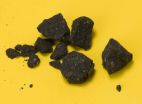(Press-News.org) ANN ARBOR, Mich. — From the moment a stroke occurs, patients must race against the clock to get treatment that can prevent lasting damage. Now, a new study shows the promise – and the challenges – of getting them state-of-the-art treatment safely at their local hospital, saving precious minutes.
The results come from an effort that tested methods to improve delivery of a time-sensitive, clot-busting drug in stroke patients at 24 community hospitals across Michigan. To date, clot-busting treatment has been mostly used at larger hospitals.
The research effort was coordinated by members of the University of Michigan Health System's Department of Emergency Medicine, Department of Neurology and Stroke Program, which offered half the hospitals education and round-the-clock treatment assistance by phone. The study was funded by the National Institute of Neurological Disorders and Stroke at the National Institutes of Health.
By the end of the study, the community hospitals across Michigan that had the U-M experts as the "sixth man" on their teams did better at delivering the drug called tPA to eligible patients than those that didn't.
The findings of the randomized controlled trial are published in Lancet-Neurology. They show that community hospitals can indeed improve patients' chances of getting tPA in the first few hours of a stroke, without increased risk of dangerous bleeding.
Data from 22 of the hospitals show that tPA use more than doubled in the 11 hospitals that were randomly chosen to get the extra help, versus a smaller increase in the 11 that didn't. Some hospitals even surpassed national targets for tPA use that large stroke centers don't always reach – a true game-changing performance.
Across the U.S., less than 2 percent of stroke patients receive tPA – when more than 11 percent could – largely because of the time limits on its use and delays in getting patients to a hospital. That's why it's important for community hospitals to offer it.
The investigation, called INSTINCT for INcreasing Stroke Treatment through INterventional Change Tactics, demonstrates that tPA can be used safely and appropriately in the community hospital setting – and that more work needs to be done to expand public access to the only treatment approved by the U.S. Food and Drug Administration to reverse the effects of stroke. While improvement at the target community hospitals that got the education was statistically significant, it was not as large as hoped for. But the findings suggest that relatively low-cost and low-tech interventions can improve local stroke care.
Lead author Phillip Scott, M.D., a U-M emergency physician and principal investigator of the trial, likens the results to the performance of teams from smaller athletic conferences that beat larger, more celebrated teams, to reach the final stages of the annual NCAA college basketball tournament.
"This study suggests that community hospitals can evaluate and treat enough emergency stroke patients to keep their teams' treatment skills sharp, but are of a size that creates rapid lines of communication and stable physican and nurse teams. This may facilitate rapid, safe stroke diagnosis and care," says Scott, an associate professor of emergency medicine at the U-M Medical School. "Four of the hospitals that received the educational intervention achieved tPA use rates of 5 to 8 percent of all stroke patients, compared to only one of the control hospitals. That's a rate many large medical centers strive to reach."
"This study, while finding only modest improvements, provides encouraging evidence that intensive professional education at community hospitals has the potential to improve the use of tPA in acute stroke care," said Scott Janis, Ph.D., program director at the NINDS. "Importantly, it also lays the groundwork for future strategies that should be explored to develop evidence-based interventions that would improve patient access to this proven therapy following stroke."
How it was done, and more about the results:
The study started by collecting baseline data on stroke treatment from 2005 and 2006 at all the hospitals. After the sites were randomized, the U-M team offered continuing medical education classes at the hospitals, workshops at U-M, and other support, including 24-hour phone consultation availability, to the hospitals chosen to receive the intervention.
All the hospitals were in the lower peninsula of Michigan, and were chosen at random from among hospitals with at least 100 stroke discharges per year. All hospitals that participated stayed in the trial until data collection ended in 2010. Hospitals could hold primary stroke center designation, as granted by the Joint Commission, but could not be tertiary academic comprehensive stroke centers.
In all, 188 tPA treatments occurred among 15,065 stroke patients during the baseline period, and 557 treatments occurred among 25,758 stroke patients from 2007 to 2010. The authors note that tPA use at hospitals nationwide rose somewhat during the study period, due to factors such as insurance reimbursement and new data on tPA's effectiveness at preventing disability.
The INSTINCT study findings were complicated by the fact that one of the hospitals enrolled in the trial became an academic stroke center after starting the study. When it and its matched hospital are excluded from the analysis, the remaining hospitals showed enough of an impact from the educational effort to be statistically significant – a 105 percent increased use of tPA over baseline.
"We essentially saw a doubling of tPA usage, using standard technologies for education and support. Importantly, the increase was achieved safely," Scott says. "This shows we can translate the knowledge of effective stroke treatment into a community setting." The size of the study, with 557 stroke patients treated after intervention began, makes it one of the largest tPA studies in the world.
More about stroke treatment:
The use of tPA in ischemic stroke has grown around the world in the last decade, but many patients who could get the drug still do not. The "treatment window" for tPA has been seen as three hours from the onset of stroke symptoms, though recent studies suggest patients can see benefit even four and a half hours out. The importance of early treatment, however, cannot be overstated, as patients treated earlier have greater benefits and the drug is not currently FDA-approved for use beyond three hours.
Considering that most stroke sufferers wait more than an hour after symptoms start before they seek help, and that travel time to a tPA-providing hospital is around 30 minutes, that leaves hospitals about an hour to do medical imaging, make a firm diagnosis and initiate tPA treatment.
Patients must then be monitored to check for brain bleeding, and to assess the impact of their stroke. To reliably accomplish this, a system for the care of acute stroke patients must already be in place when a patient arrives at the emergency department.
Patients who don't reach a location where they can received standard tPA treatment in time can still potentially be treated with advanced catheter-based clot removal treatment at a major referral hospital such as U-M. These advanced therapies have a longer time window for treatment, but have not been proven more effective than early standard treatment. The Stroke Program at U-M is participating in multiple trials to improve advanced stroke treatment.
INFORMATION:
Additional authors: William Meurer, M.D., Shirley Frederiksen, M.S., and Robert Silbergleit, M.D. of U-M Emergency Medicine; John Kalbfleisch, Ph.D., Zhenzhen Xu, Ph.D. and Mary Haan, DrPH of the U-M School of Public Health; and Lewis B Morgenstern, M.D., of U-M Neurology. Morgenstern directs, and Scott, Meurer, Frederiksen and Silbergleit are members of, the U-M Stroke Program.
Funding source: NINDS R01-NS-050372
Better stroke care, everywhere: NIH-funded study boosts local hospitals' clotbuster use
24-hospital trial shows inexpensive education effort increases safe tPA use
2012-12-21
ELSE PRESS RELEASES FROM THIS DATE:
Peacock love songs lure eavesdropping females from afar
2012-12-21
Durham, NC — Deep in the scrublands of Keoladeo National Park in northwest India, one thing was hard for biologist Jessica Yorzinski to ignore: It wasn't the heat. It wasn't the jackals. It was the squawks of peacocks in the throes of passion.
From behind the trees in the distance, she could hear a loud two-part whoop, the distinctive call that male peacocks make right before mating.
During the peacock courtship dance, a male announces that he's ready to make his move by dashing towards the object of his affection and emitting a singular squawk before mounting his ...
Not all gamers are low scorers on friendships, relationships
2012-12-21
UNIVERSITY PARK, Pa. -- Not all video game players are destined for lives filled with failing relationships and dwindling friendships, according to Penn State researchers, who say that a lot depends on the role of the game-playing activity in the gamer's life.
"There's a common stereotype that if you play video games, then you are a loner," said Benjamin Hickerson, assistant professor of recreation, parks and tourism management. "But it may have more to do with how a person is involved in gaming that determines how their social support is affected."
In a study of people ...
Steering stem cells to become 2 different building blocks for new blood vessels
2012-12-21
Growing new blood vessels in the lab is a tough challenge, but a Johns Hopkins engineering team has solved a major stumbling block: how to prod stem cells to become two different types of tissue that are needed to build tiny networks of veins and arteries.
The team's solution is detailed in an article appearing in the January 2013 print edition of the journal Cardiovascular Research. The article also was published recently in the journal's online edition. The work is important because networks of new blood vessels, assembled in the lab for transplanting into patients, ...
2 novel treatments for retinitis pigmentosa move closer to clinical trials
2012-12-21
New York, NY (December 20, 2012) — Two recent experimental treatments — one involving skin-derived induced pluripotent stem (iPS) cell grafts, the other gene therapy — have been shown to produce long-term improvement in visual function in mouse models of retinitis pigmentosa (RP), according to the Columbia University Medical Center (CUMC) scientists who led the studies. At present, there is no cure for RP, the most common form of inherited blindness.
"While these therapies still need to be refined, the results are highly encouraging," said Stephen H. Tsang, MD, PhD, associate ...
NASA sees Cyclone Evan blown apart by wind shear
2012-12-21
Cyclone Evan is no more than a remnant low pressure area in the South Pacific Ocean now. NOAA's GOES-15 satellite captured an image of the remnants from its fixed orbit in space on Dec. 20 that showed strong wind shear had basically blown the storm apart.
The last official bulletin by the Joint Typhoon Warning Center was issued on Dec. 19 at 2100 UTC (4 p.m. EST/U.S. or 12:56 a.m. Fiji local time on Dec. 20). At that time, Evan's maximum sustained winds were still near 35 knots (40 mph/64.8 kph) and it had transitioned into an extra-tropical storm. It was located 400 ...
Eighth Landsat satellite arrives at launch site
2012-12-21
An oversized semi-trailer truck carrying NASA's Landsat Data Continuity Mission (LDCM) has arrived at its launch site at Vandenberg Air Force Base in California in preparation for launch. This NASA and U.S. Geological Survey mission will continue a 40-year record of measuring change on the planet from space.
LDCM is the eighth satellite in the Landsat series, which began in 1972. It will extend and expand global land observations that are critical in many sectors, including energy and water management, forest monitoring, human and environmental health, urban planning, ...
Protein kinase Akt identified as arbiter of cancer stem cell fate
2012-12-21
PHILADELPHIA — The protein kinase Akt is a key regulator of cell growth, proliferation, metabolism, survival, and death. New work on Akt's role in cancer stem cell biology from the lab of senior author Honglin Zhou, MD, PhD and Weihua Li, co-first author, both from the Center for Resuscitation Sciences, Department of Emergency Medicine, Perelman School of Medicine, University of Pennsylvania, and Xiaowei Xu, Department of Pathology and Laboratory Medicine, appears in Molecular Cell. The findings were also highlighted in Nature and Science reviews.
This new research shows ...
Discovery of Africa moth species important for agriculture, controlling invasive plants
2012-12-21
GAINESVILLE, Fla. — In the rain forests of the Congo, where mammals and birds are hunted to near-extinction, an impenetrable sound of buzzing insects blankets the atmosphere.
Because it is a fairly inaccessible region with political unrest, much of the Congo's insect biodiversity remains largely undiscovered. In a new monographic book published this week in Zootaxa, researchers at the University of Florida and the Royal Museum of Central Africa in Belgium provide insect biodiversity information for this area in Central Africa that increasingly undergoes habitat destruction. ...
U of T Researchers uncover major source of evolutionary differences among species
2012-12-21
University of Toronto Faculty of Medicine researchers have uncovered a genetic basis for fundamental differences between humans and other vertebrates that could also help explain why humans are susceptible to diseases not found in other species.
Scientists have wondered why vertebrate species, which look and behave very differently from one another, nevertheless share very similar repertoires of genes. For example, despite obvious physical differences, humans and chimpanzees share a nearly identical set of genes.
The team sequenced and compared the composition of hundreds ...
New meteorite suggests that asteroid surfaces more complex than previously thought
2012-12-21
Meteorites that had fallen from an asteroid impact that lit up the skies over California and Nevada in April are showing scientists just how complex an asteroid surface can be. A new study published in Science this week by an international team of researchers describes the speedy recovery of the meteorites and reports that this space rock is an unusual example from a rare group known as carbonaceous chondrites, which contain some of the oldest material in the solar system. The study of these meteorites and others like them could hold answers to unsolved mysteries about ...
LAST 30 PRESS RELEASES:
Tea linked to stronger bones in older women, while coffee may pose risks
School feeding programs lead to modest but meaningful results
Researchers develop AI Tool to identify undiagnosed Alzheimer's cases while reducing disparities
Seaweed based carbon catalyst offers metal free solution for removing antibiotics from water
Simple organic additive supercharges UV treatment of “forever chemical” PFOA
£13m NHS bill for ‘mismanagement’ of menstrual bleeds
The Lancet Psychiatry: Slow tapering plus therapy most effective strategy for stopping antidepressants, finds major meta-analysis
Body image issues in adolescence linked to depression in adulthood
Child sexual exploitation and abuse online surges amid rapid tech change; new tool for preventing abuse unveiled for path forward
Dragon-slaying saints performed green-fingered medieval miracles, new study reveals
New research identifies shared genetic factors between addiction and educational attainment
Epilepsy can lead to earlier deaths in people with intellectual disabilities, study shows
Global study suggests the underlying problems of ECT patients are often ignored
Mapping ‘dark’ regions of the genome illuminates how cells respond to their environment
ECOG-ACRIN and Caris Life Sciences unveil first findings from a multi-year collaboration to advance AI-powered multimodal tools for breast cancer recurrence risk stratification
Satellite data helps UNM researchers map massive rupture of 2025 Myanmar earthquake
Twisting Spins: Florida State University researchers explore chemical boundaries to create new magnetic material
Mayo Clinic researchers find new hope for toughest myeloma through off-the-shelf immunotherapy
Cell-free DNA Could Detect Adverse Events from Immunotherapy
American College of Cardiology announces Fuster Prevention Forum
AAN issues new guideline for the management of functional seizures
Could GLP-1 drugs affect risk of epilepsy for people with diabetes?
New circoviruses discovered in pilot whales and orcas from the North Atlantic
Study finds increase in risk of binge drinking among 12th graders who use 2 or more cannabis products
New paper-based technology could transform cancer drug testing
Opioids: clarifying the concept of safe supply to save lives
New species of tiny pumpkin toadlet discovered in Brazil highlights need for conservation in the mountain forests of Serra do Quiriri
Reciprocity matters--people were more supportive of climate policies in their country if they believed other countries were making significant efforts themselves
Stanford Medicine study shows why mRNA-based COVID-19 vaccines can cause myocarditis
Biobanking opens new windows into human evolution
[Press-News.org] Better stroke care, everywhere: NIH-funded study boosts local hospitals' clotbuster use24-hospital trial shows inexpensive education effort increases safe tPA use





